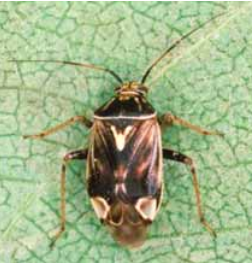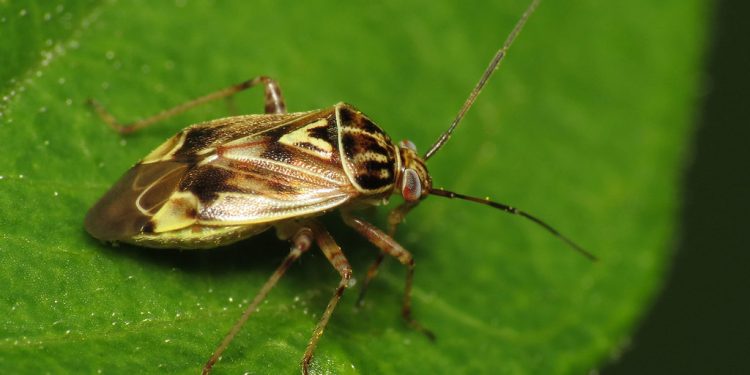Life stages: eggs, nymphs, adults.
The tarnished plant bug is a common pest of many vegetable and fruit crops. Adults overwinter in protected areas: in debris found in fencerows, in woods, in ditches or in fields of forage legumes.
They become active as the weather warms in the spring. Tarnished plant bugs feed on leaves, stems and petioles, removing plant sap with their piercing and sucking mouthparts. While feeding, this insect introduces a toxin that causes leaves to wilt and blossoms to drop prematurely. Since nymphs feed more than adults, nymphs are more destructive.
The tarnished plant bug may spread the potato spindle tuber viroid (see page 110).
Adults. They are oval, with flat bodies, and about 6 mm long. Their colour is variable, from pale yellow with a few black markings to reddish-brown to black with a few paleyellow markings. They have a distinctive light-coloured triangular pattern on their backs. Tarnished plant bugs fly from plant to plant in short bursts.
Young nymphs. They are yellowish-green and about 1 mm long. Nymphs resemble the adults except for their smaller size and the absence of fully developed wings.
Older nymphs. Older nymphs are green and robust with long legs, long antennae and developing wings. Nymphs can be distinguished from aphids by their rapid movement, more robust legs and lack of cornicles.
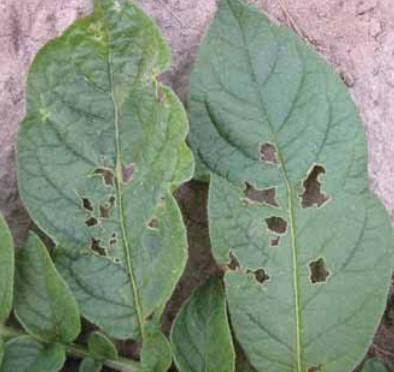
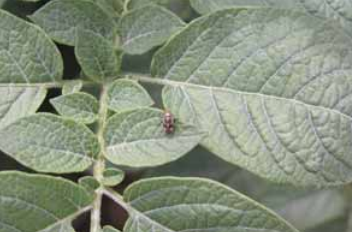
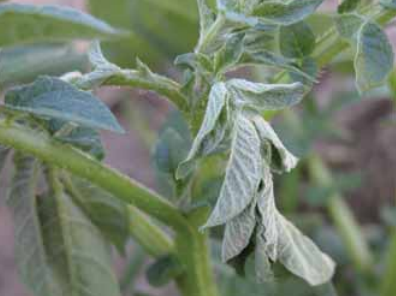
leaves and injects a toxin that causes the leaves
to wilt.

nymph.
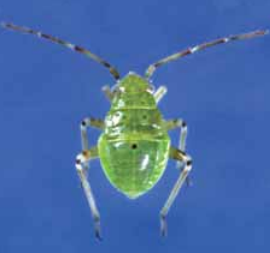
nymph.
